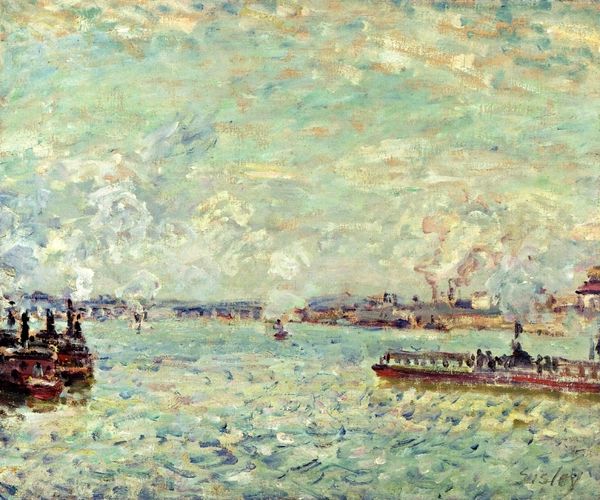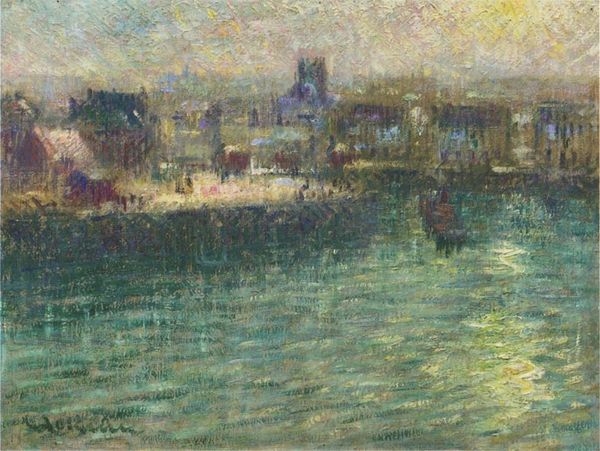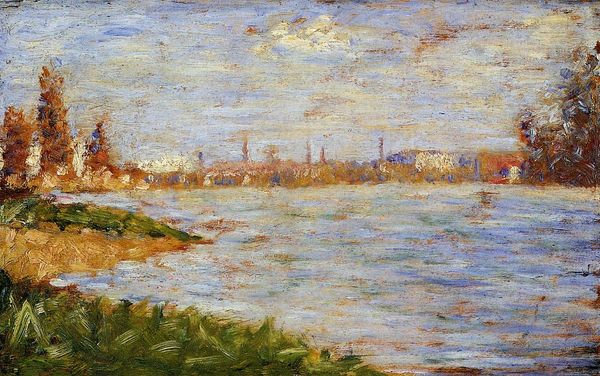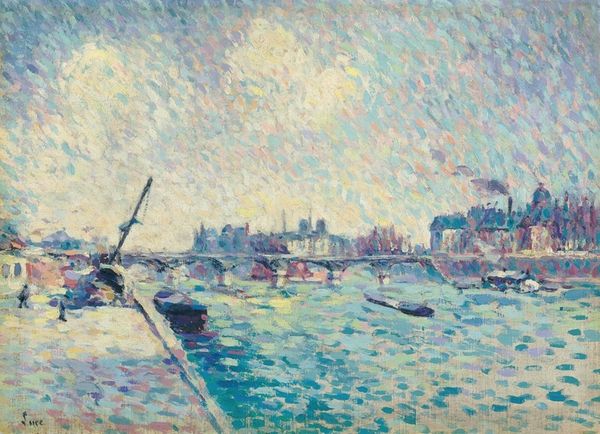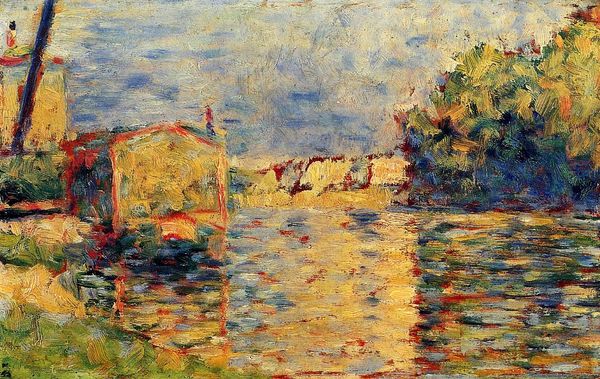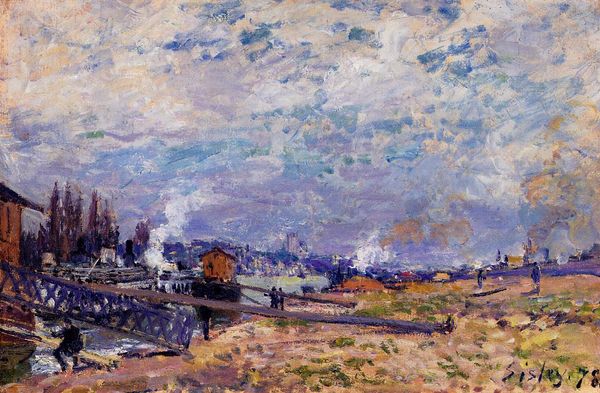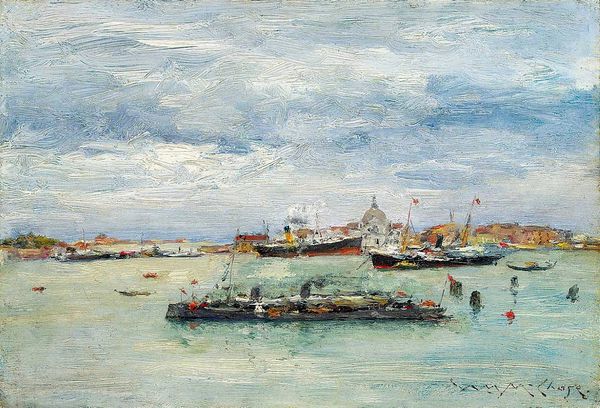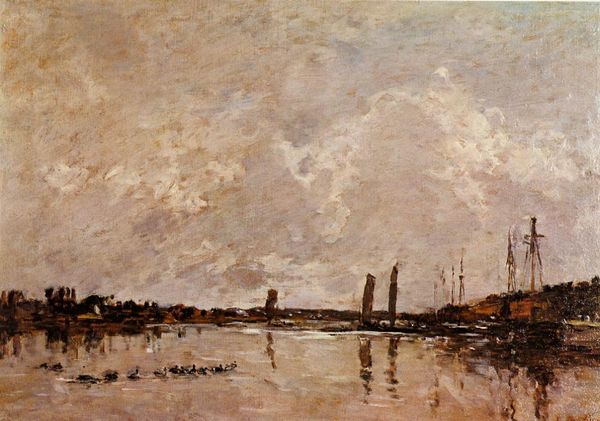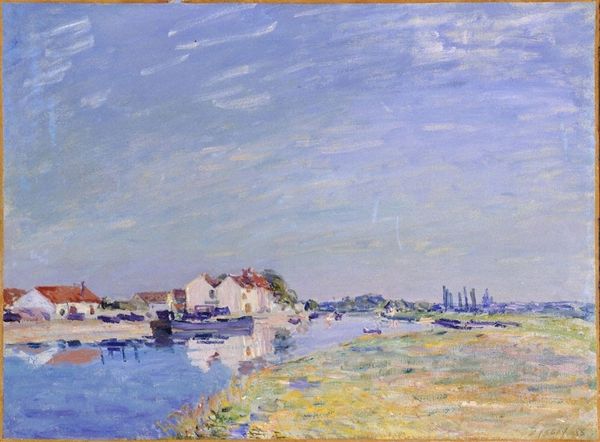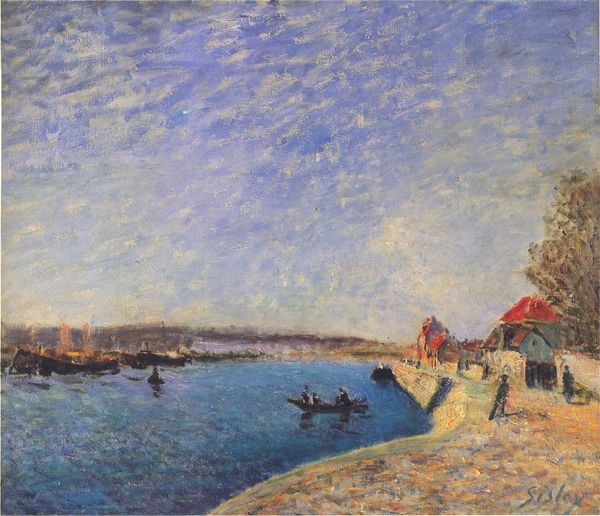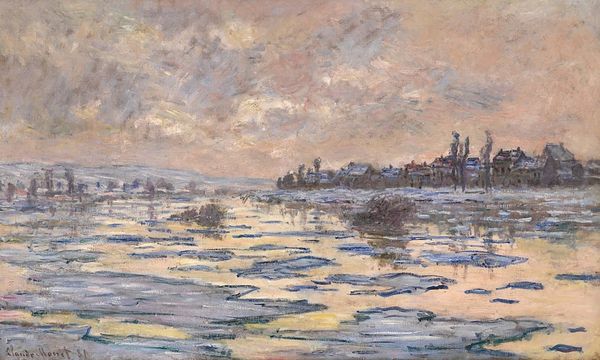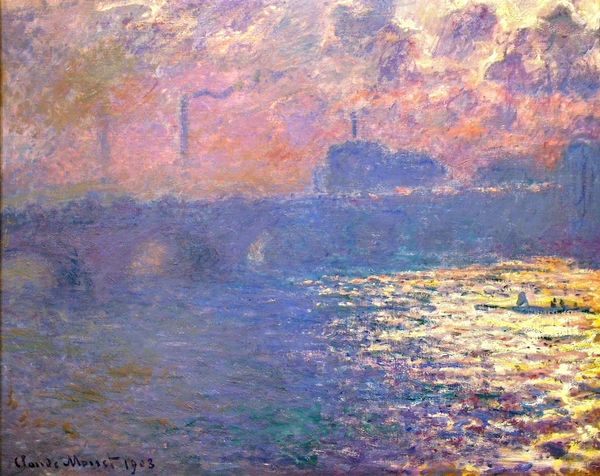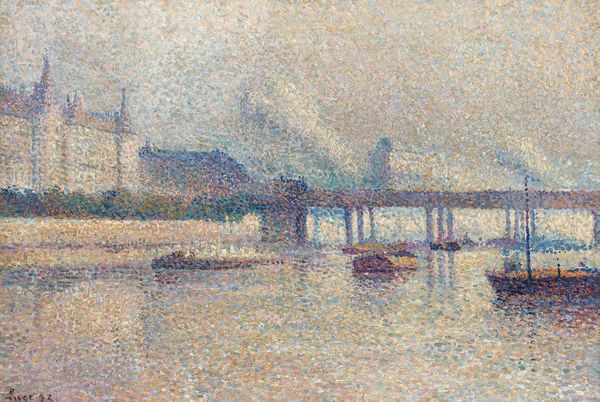
Copyright: Public domain
Curator: Right now we're looking at "Morning Fog over the Port of Veer, Holland" painted in 1906 by Théo van Rysselberghe. Editor: It has this gorgeous muted quality, doesn’t it? Almost monochromatic, like a dream fading into the mist. I'm immediately drawn to the hazy atmosphere. The whole painting breathes quietness. Curator: It's typical of his post-impressionist style, employing a subtle use of light to depict this early morning scene. He wasn't just recording what he saw; he was trying to evoke a particular feeling or sensation. The plein-air technique adds another layer to it, capturing the transient nature of the scene. Editor: Absolutely. Fog itself is a fascinating symbol—obscuring the known, hinting at the unseen. Here, it veils the port, turning sturdy architecture into soft, ambiguous shapes. The lack of distinct details forces you to focus on the emotional tone: melancholic, perhaps, or even expectant. Curator: Exactly! Think about how the port town would have resonated with audiences at the time. Ports have historically been hubs of transition, trade, but also departure and longing. Editor: That's true. The subtle touches of color - the way he weaves purples and ochres into both the water and sky - create a kind of unity. The port becomes one with the water and air. And consider Veer's history itself. It declined in importance around this time…the fog then might stand for that passing grandeur. Curator: What a perceptive connection to the city’s fortunes. So, do you feel Rysselberghe intended to communicate this through symbolic means? Or was his objective mostly capturing ephemeral natural beauty? Editor: It's probably both! The magic happens when the personal meets the universal. I suspect he intended that viewers of future eras might respond as deeply, with introspection of time and remembrance. The symbolism adds a poignant dimension, it allows the painting to become not just a view of a specific place but a reflection on time and the stories woven into landscapes. Curator: Indeed, a great insight to conclude on. This piece shows us that even a seemingly straightforward landscape painting can invite introspection. Editor: Well said! I'm seeing the beauty of subtle shades in new light.
Comments
No comments
Be the first to comment and join the conversation on the ultimate creative platform.
